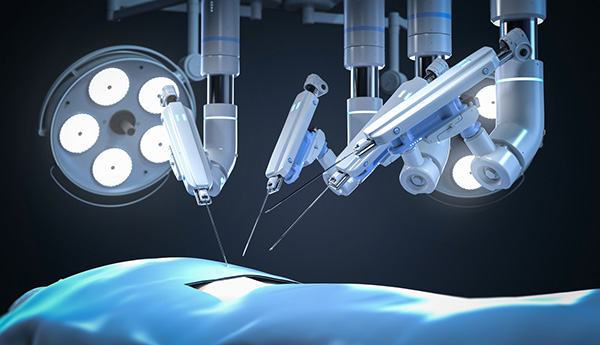
Robotics is transforming the way spine surgery is performed. It combines advanced computer technology with a surgeon’s expertise to offer patients faster recovery times, reduced risks, and superior outcomes. If you’ve been suffering from chronic back pain or a debilitating spine condition, here’s how robotic-assisted spine surgery could significantly improve your spine health and quality of life.
- Advanced Preoperative Planning for Greater Accuracy
Before surgery, advanced imaging techniques like CT scans or X-rays generate a 3D model of the patient’s spine. This enables the surgeon to meticulously plan the procedure for the most effective and precise approach. - Surgeon-Guided Robotic Arm for Maximum Control
During surgery, the surgeon operates a robotic arm that enhances accuracy by stabilizing surgical instruments and eliminating natural hand tremors, significantly reducing the risk of human error. - Real-Time Imaging and Navigation for Enhanced Surgical Outcomes
The robotic system provides high-definition, real-time imaging and continuous feedback, giving the surgeon a clearer view of the spine and ensuring safer, more accurate execution of the procedure. - Minimally Invasive Techniques for Faster Healing
Robotic-assisted spine surgery involves smaller incisions and less disruption to surrounding tissues, leading to reduced pain, minimal blood loss, and a quicker recovery for patients. - Superior Postoperative Outcomes for Long-Term Success
Patients benefit from shorter hospital stays, a lower risk of complications, and a faster return to daily activities compared to traditional spine surgery methods.
Spinal Conditions Treated with Robotic Spine Surgery
Robotic spine surgery may be used to treat degenerative disc disease and herniated discs, relieving nerve compression and restoring function. Patients diagnosed with spinal stenosis and spondylolisthesis benefit from enhanced accuracy in decompression and stabilization procedures. Spinal deformities like scoliosis and kyphosis are corrected with precise instrumentation placement. Robotic surgery can also help with spinal tumor removal, vertebral fracture repair, and revision surgery for failed procedures.
Don’t let spine pain take control of your life or keep you from doing the activities you love. Schedule a personalized evaluation with Dr. Moazzaz to explore advanced robotic-assisted treatment options for your condition.
AUTHOR: Dr. Payam Moazzaz is a board-certified orthopedic spine surgeon in California specializing in robotic-assisted minimally invasive spine surgery.

